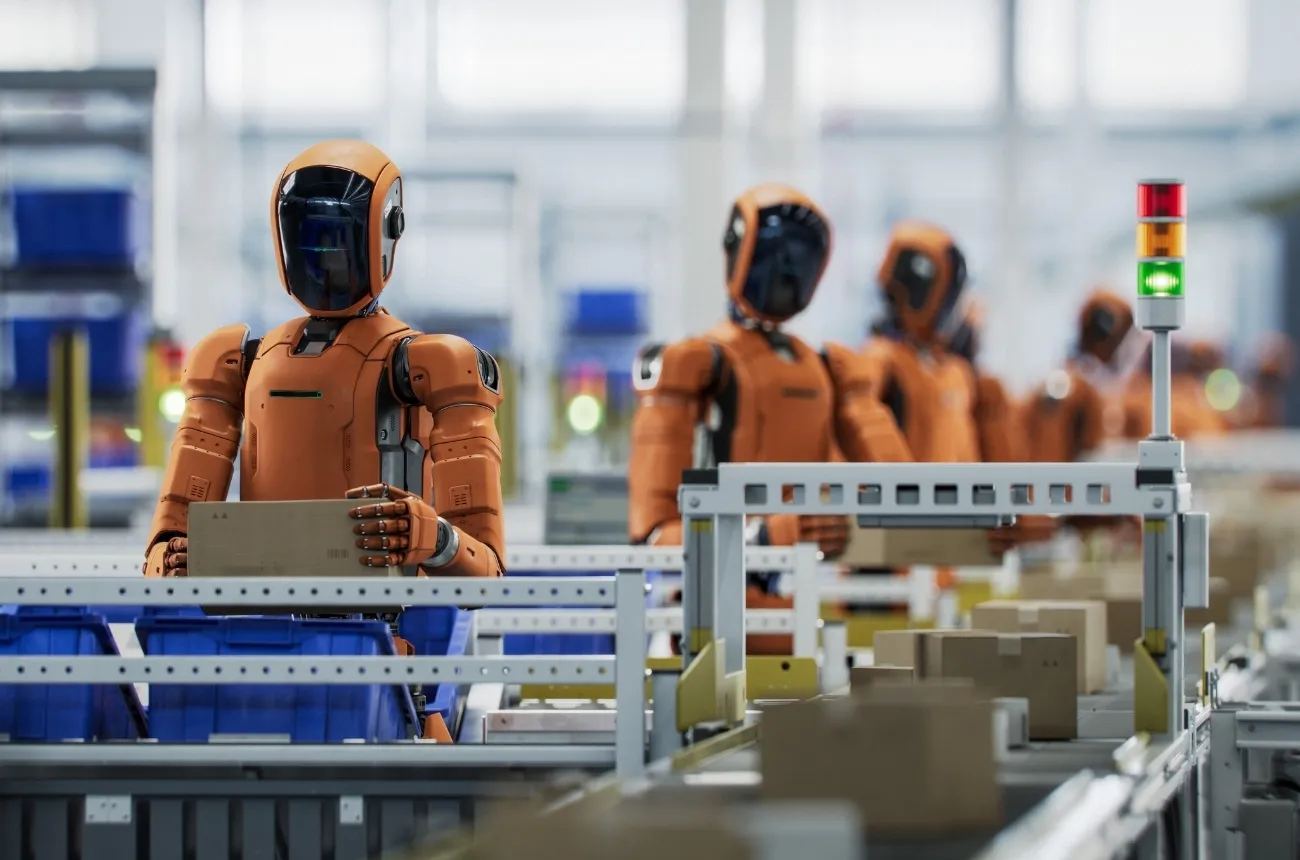Key points
- AI systems learn from data to improve supply chain management and visibility, categorized into predictive, generative, and agentic AI
- Predictive AI forecasts outcomes like ETAs and delays, supporting human decision-making with accurate insights
- AI can overall enhance visibility, efficiency, decision support, risk awareness, and customer communication by automating tasks and providing timely recommendations
- Emerging AI technologies offer new planning and adaptability possibilities, but challenges like data privacy and energy efficiency need addressing.
Artificial intelligence is transforming the global supply chain landscape. As businesses respond to rising complexity, disruption, and customer expectations, AI is being applied across planning, logistics, and operational decision-making. But the term "AI" includes a range of technologies with different levels of maturity. Some are already in use today, while others’ ROI remains to be proven.
This article explores how AI contributes to supply chain management, with a detailed focus on predictive applications that are already delivering measurable results. We also consider what might come next in agentic AI. Throughout, we take a balanced view that emphasizes human involvement, data responsibility, and sustainability.
What Is AI in Supply Chain Visibility?
In supply chain management, AI refers to systems that learn from data to identify patterns and improve over time without needing explicit reprogramming. These systems fall into three general categories:
- Predictive AI analyzes historical and real time data to forecast likely outcomes
- Generative AI produces new content or simulations that may support decision-making
- Agentic AI suggests or initiates recommended actions, often involving multiple AI systems in sequence.
Predictive AI: Improving Real Time Decision Support
What It Does
Predictive AI uses data patterns to forecast what is likely to happen next. In logistics visibility, this includes:
- Estimated time of arrival (ETA) calculations
- Delay detection and alerts
- Performance forecasting for carriers or lanes
- Inventory and capacity planning
These forecasts allow supply chain teams to take informed action before disruptions escalate. Predictive models draw on both historical patterns and live operational data to produce more accurate insights than manual methods.
Practical Examples
Estimated time of arrival accuracy is one of the most visible benefits of predictive AI in logistics visibility. By combining hundreds of different parameters - including location data, route behavior, and shipment milestones - and effectively analyzing both internal an external data, considerable gains in ETA accuracy can be obtained.
In these systems, AI acts as a support tool. Human users still review exceptions, make routing decisions, and manage customer communication. Predictive systems help users work more confidently and respond more quickly, but they do not remove responsibility from human operators.
Potential Benefits of AI in Supply Chain Visibility
While still developing in some areas, AI has already shown value in supporting key aspects of supply chain performance. Most current applications are concentrated in predictive tools, which help organizations make more informed decisions based on real time and historical data.
Improved Visibility
AI can enhance visibility by synthesizing multimodal tracking data into coherent, real time insights. This allows logistics teams to move beyond static updates and respond more quickly when shipments deviate from plan. Predictive alerts may reduce blind spots and improve operational awareness, especially in complex or time sensitive shipments.
Greater Operational Efficiency
By automating repetitive tasks like delay detection or estimated time of arrival recalculations, AI may reduce manual workload for planners. In practice, this could contribute to more efficient dispatching, better routing decisions, and faster response to exceptions. Some studies suggest AI driven tools can support reductions in logistics costs and improve on time delivery performance when paired with consistent data quality and human oversight.
Stronger Decision Support
Predictive models may offer help for teams to interpret what that data means in context. Rather than relying solely on dashboards or reports, planners can receive timely recommendations that highlight priority issues. When used responsibly, this may lead to faster and more confident decision making, particularly under pressure.
Proactive Risk Awareness
AI systems can be trained to detect early warning signs of disruption, such as transit delays, route anomalies, or deviations in expected dwell times. These insights may help organizations identify risks earlier and implement mitigation plans sooner, improving supply chain resilience over time.
Customer Communication and Confidence
Reliable estimated arrival times and proactive status updates may reduce uncertainty for customers and stakeholders. This can support more accurate delivery forecasting and fewer support requests, ultimately contributing to stronger service quality and customer satisfaction.
Generative AI: How it could help
Generative AI creates new content such as text summaries, simulations, or even process documentation. In a supply chain context, this could support:
- Writing supplier onboarding guides
- Summarizing delivery exceptions or incident reports
- Modeling ‘what if’ scenarios for risk planning.
These tools are still in the exploration stage. They are most useful today in administrative or analytical contexts rather than live operations.
Before generative AI is used at scale, several concerns must be addressed:
- Ensuring sensitive data is not exposed
- Avoiding hallucinated or inaccurate outputs
- Minimizing energy use for large language models
- Providing human verification before any output is used.
Agentic AI: A Theoretical but Promising Step
Agentic AI is designed to go beyond forecasting by recommending actions based on predicted outcomes, often using multiple AI systems, in sequence or in parellel. In some cases, it might execute those actions automatically. Potential use cases include:
- Rerouting shipments to avoid congestion
- Reallocating inventory across fulfillment centers
- Adjusting production schedules in real time.
Although the technology exists in controlled scenarios, agentic AI is not yet widely adopted in operational supply chains. Challenges include integration with enterprise systems, lack of trust in autonomous actions, and the need for human supervision.
Agentic AI also poses significant security challenges, as it can imply allowing AI systems to access services like calendars, databases, payment systems and more.
Experts agree that, especially with regards agentic AI, trust is essential, in particular when decisions affect customers, costs, or safety.
The Future of AI in Global Supply Chains
AI is already delivering value in supply chain operations, particularly through predictive tools that improve accuracy and responsiveness. Looking forward, emerging forms of AI such as agentic and generative models offer new possibilities for planning, coordination, and adaptability.
These technologies may enable more flexible scenario modeling, adaptive workflows, and faster responses to disruption. As they develop, organizations will have the opportunity to shape how these tools are applied within operational and regulatory frameworks.
For any AI application in the supply chain, certain implementation principles remain essential:
- Human oversight ensures operational judgment is retained
- Transparency allows users to understand how outcomes are produced
- Data privacy must be maintained across systems and jurisdictions
- Energy efficiency should be factored into technology decisions.
As these capabilities advance, the focus should be on building systems that enhance rather than replace human expertise. The most practical use of AI may be one that strengthens coordination between people and technology, enabling supply chains to become more informed, adaptive, and resilient.
For organizations considering these technologies, early steps such as evaluating current processes, improving data quality, and planning phased adoption can help ensure that AI is introduced in a way that is both responsible and effective.















